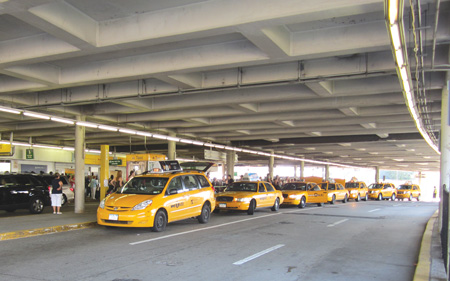By Don McCurdy
It appears that the line from Total Recall is getting closer to happening. It has been reported that congress has passed the “Self Drive Act.”
According to the article, the bill eases certain restrictions on vehicle design to allow companies to build and test driverless cars without some of the safety regulations that apply to ordinary production vehicles.
I suppose the size of pedals and steering wheels isn’t as critical as it might be in a driverless car. The report further states that the bill authorizes 100,000 driverless vehicles per year.
Cyber security was big in the plan, but the most interesting part of the article was the consideration of the effect driverless vehicles would have on the transportation industry. Most certainly it would reduce labor costs by eliminating drivers.
At the same time, the number of vehicles necessary to transport people and products would be reduced decreasing the manufacturing requirements of vehicles. The impact of self driving vehicles on the employment rate could be staggering when all told.
Reports are that the Taxi and Limousine Commission of New York City is promoting their new “Fair Share Pilot” allowing drivers to lease taxicabs in a variety of ways, including commission. The “new” rules allow a lot more freedom, with less government interference, and great flexibility in leasing plans.
Drivers no longer have to go to a garage to get their vehicle and can lease a vehicle by phone. During my stint as a taxicab owner I had a variety of lease programs for drivers of my taxicabs. That was part of the attraction.
The more rigidity in the government rules the less flexibility taxicab owners and drivers have to adjust the industry to their needs. The taxicab industry is under duress in New York City and nearly every city across the US. Less regulations are certainly in line to allow more flexibility.
Uber offers its drivers almost unlimited flexibility. This new found flexibility on the part of the TLC will most certainly help the drivers and medallion holders compete.
It’s easy to compete when everyone in town is doing the same thing. Now that there is impetus for change, perhaps, the future model will allow taxicabs to use a dispatch service and simply call it a “flag” by phone, which pretty much sums up Uber’s approach.
Uber has a new CEO, Dara Khosrowshahi, formerly of Expedia. The upstart transportation company has been having some issues with management recently with the founder being kicked to the curb by the investors based on some scandalous reports coming out of the company.
Khosrowshahi is reported to have a good track record with Expedia both financially and managerially. He is reported to lack transportation experience, but that was the knock on Kalanick when Uber started up.

Reports from Wisconsin are that numerous groups are supporting a pair of bills regulating the “shared ride” industry. The Wisconsin taxicab industry appears to be trying to out Uber, going to the state level looking for regulations to save the industry that has been stagnated by regulation.
At least they’re consistent. According to the article, Uber et al, by not playing by the same rules as the taxicab industry, has cost the taxicab industry 70% of its riders. So, if the taxicab industry is so much better being regulated how did they manage to lose 70% of their riders?
Consistently, the taxi industries in various cities reach out to regulators to save them from the Uber devil by adding burdens to the “shared ride” companies rather than getting rid of the regulations that control the taxicab industry. Perhaps, with a new CEO, Uber will graciously accept new regulations or just keep “investing” in good government.
A recent article promoting situational awareness, an important idea in my world, also included some interesting information from Austin, Texas after Uber left.
Austinites were reported to have increased their personal car usage with 9% of the survey participants stating that they purchased a car because the shared ride service was no longer available. It further stated that only 3% switched to public transportation.
Based on that information it would appear that Uber style services actually do decrease the number of vehicles on the road and make ground transportation for hire a more viable means of transportation.
Austin has never been known as a particularly good city for public transportation, mostly based on its geographical size and layout. So, Uber style service having that great an impact is quite remarkable. I haven’t heard if Uber’s return to Austin has affected car sales there nor not.
If you have any comments regarding this or any of my articles please feel free to contact me at don@mcacres.com. - dmc